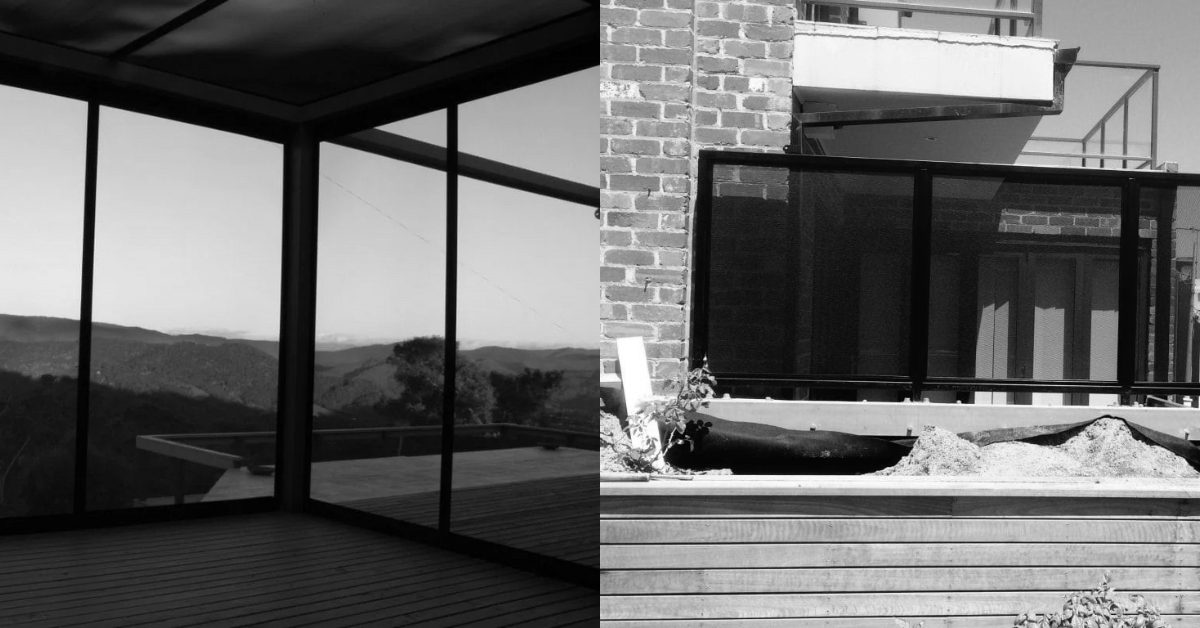For Australians, bushfire is a constant threat reminding us of the beautiful but dangerous country we live in.
As we have seen over the past few years’ bushfire brings with it long-term negative impacts to lives, property, the economy and the environment. The risk of bushfires continues to increase exponentially, aggravated by climate change – causing unpredictable weather patterns including hotter days and longer summers. Heat and drought increase the quantity and dryness of fuel loads and the risk of lightning strikes – translating to heightened fire risk.
At Clearshield we recognise the importance of protecting our family and our home from bushfires, which is why we advocate for the use of bushfire screens and fire attenuation screens in all homes residing in bushfire zones. Our screens are some of the strongest on the market – rated to BAL-40. Combined with regular fuel reduction works and fire preparedness planning, our screens will form a multi-pronged defence strategy, significantly contributing to the protection of assets and lives in the event of bushfires.
How do bushfire and fire attenuation screens differ?
Bushfire-rated screens are designed to fit over windows and doors to deflect, dissipate and reduce radiant heat, helping to fireproof your home. Our superior range of bushfire screens provide protection to BAL-40, without inhibiting or obscuring views or limiting the entry of natural light. They also act as security and insect barriers, limiting a range of unwanted visitors from entering your home uninvited.
As the name suggests, fire attenuation screens reduce the force of radiant heat. The screens function like fire guards around a fireplace, blocking embers from escaping from or entering a building. Attenuation screens significantly cut radiant heat by dispersing it across the screen’s surface. This reduces the chances of combustible materials in a building from igniting.
Clearshield’s range of fire attenuation screens is designed to be discreet and attractive whilst affording a comprehensive protective factor to meet the requirements specified in Australian Building Code AS1530.4-2005.
Do I need a bushfire or attenuation screen?
According to the National Construction Code (NCC), wall openings must be protected when they are close to adjoining property boundaries. Bushfire screens and attenuation screens are two methods to integrate these regulations into your home
The code also stipulates that protection is required when the distance between the fire source to which it is exposed, and the opening is:
- Within 6 m of a building in the same allotment
- Less than 3 m from the rear or side boundary of the allotment
- The results of an assessment of fire safety by a fire safety engineer
Bushfire Attack Levels
Understanding your home’s Bushfire Attack Level (BAL) enables you to assess its vulnerability to the risk of bushfire, by evaluating the risk presented by direct flames, ember attack and radiant heat.
BAL ratings consider the Fire Danger Index, the slope of the land, the type and quantity of surrounding vegetation including the proximity to any assets. The graph below has been taken from the vba.vic.gov website and explains the levels of risk and their rating.
| Bushfire attack level | Radiant heat exposure (AS 3959) and levels of exposure | Description of Predicted bushfire attack and levels of exposure |
|---|---|---|
| Low | Insignificant | The risk is very low and radiant heat on the building is not significant enough to warrant specific construction requirements; however ember attack may still occur. If you are in a designated BPA and your bushfire attack level is BAL – LOW, you must still construct to a minimum BAL 12.5. |
| BAL – 12.5 | 0 to 12.5 kW/m2 | Primarily a risk of ember attack; and risk of radiant heat is considered low. |
| BAL – 19 | 12.5 to 19 kW/m2 | Risk is considered moderate with increasing levels of ember attack and burning debris ignited by wind-borne embers; increasing the likelihood of exposure to radiant heat. |
| BAL – 29 | 19 to 29 kW/m2 | Risk is considered to be high with increasing levels of ember attack and burning debris ignited by wind-borne embers; increasing the likelihood of exposure to radiant heat. |
| BAL – 40 | 29 to 40 kW/m2 | Risk is considered to be very high. Increasing levels of ember attack and burning debris ignited by wind-borne embers; increasing likelihood of exposure to radiant heat and some direct exposure to flames possible. |
| BAL – FZ | 40 kW/m2 + (flame contact) | Risk is considered to be extreme. Direct exposure to flames from fire front is likely in addition to high levels of radiant heat exposure and ember attack. |
For those living in BAL-LOW to BAL-12.5, the risk is lower and less stringent construction and regulations are required to protect life and assets.
In risk ranges from moderate to extreme, homeowners have an obligation to incorporate fire mitigation strategies into their home designs. In these zones, bushfire screens and fire attenuation screens can literally be the difference between life and death. Clearshield screens are approved for all BAL Levels up to BAL-40 and meet all requirements outlined in the Australian Standard AS3959-2009 – to ensure your family and home get the best protection available on the Australian market.
Bushfire preparedness
Bushfires can occur at any time of the year. The team at Clearshield recommend you have a bushfire plan in place for yourselves, your property and your livestock. Decide now whether you plan to stay and defend your property or leave. Consider the value of preparing a ‘Grab and Go’ type bag with all your important documentation, family photos, insurance, ID and financial information scanned onto a thumb drive. Hang it on a door in a central position in the home so it can be collected quickly.
If you reside in a bushfire-prone area, contact Clearshield today for a free quote or to find out more about our range of security screens, plantation shutters and protective screens.



